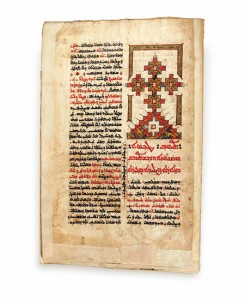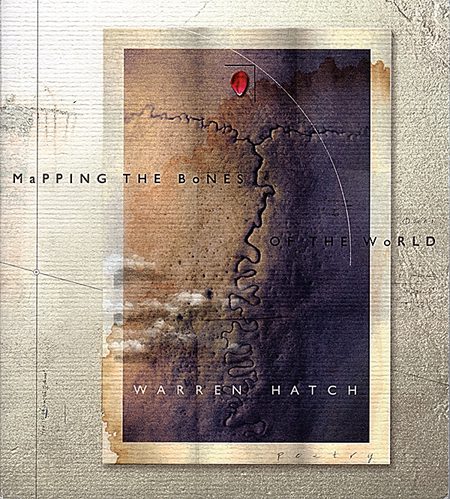A collection of rare Christian manuscripts will soon be accessible to scholars worldwide.
A collection of rare Christian manuscripts—some dating to the fifth and sixth centuries—will soon be accessible to scholars worldwide, thanks to a first-time collaboration between BYU, the Vatican Library, and the Assyrian Church of the East.
Working alongside their Vatican colleagues for three years, BYU scholars imaged more than 14,000 pages of text to produce a digital library of 33 important Syriac Christian manuscripts, which will be available on DVD. For Bishop Mar Bawai Soro of the Assyrian Church of the East, access to these texts—which for centuries were out of reach—will help his church members to reconnect with their heritage.
“It was rather an emotional moment when I first viewed the content of the DVD in Rome,” says Soro, a San Jose, Calif.-based leader of one of the world’s oldest Christian churches. “These manuscripts really tell our ‘lost’ story.”
“Our church is so small and insignificant today, but these manuscripts tell of the forgotten glory that our forefathers and foremothers had. In addition, they contain what we believe and hold valuable as teachings and traditions, as doctrine and dogma,” he says.
In 1997 Soro asked the BYU Institute for the Study and Preservation of Ancient Religious Texts (ISPART) about creating a digital library of Syriac Christian texts.
“He had heard about our Dead Sea Scrolls database project and wondered if we might be able to do something similar with the textual tradition of his church,” says Noel B. Reynolds, ’67, executive director of the institute. “These texts present important Eastern Christian traditions that have not been preserved in the Greek manuscripts,” says Reynolds.

A 17th-century liturgical text from the East Syriac Beth Gazza (or “treasury”) was part of the Vatican Library collection of Syriac Christian manuscripts digitized by BYU scholars. In all, 33 manuscripts were digitized and made widely available on DVD.
“There’s a renewed realization of the importance of the early stages of the growth of Christianity,” says Kristian S. Heal, a research associate for ISPART and a specialist in Syriac studies. “Many of these texts come from that earlier period. These texts have something to say to us.”
The newly digitized collection includes unpublished works by early Eastern Christian writers such as Jacob of Serugh, Ephrem the poet, and Isaac the Syrian. “The Chronicle of Edessa,” for example, describes life in the city of Edessa beginning in the second century.
Most of the manuscripts are from a collection that the Vatican purchased in the 18th century from an Egyptian monastery. For centuries, Syriac Christians themselves were denied access to the manuscripts, even though the texts relate to their early history.
“In the last century, the Vatican Library has moved toward open access. Before that point, the library was only accessible to ecclesiastics working in the Catholic Church,” says Heal.
“The Vatican now is very willing to re-offer those manuscripts back to Syriac Christianity” through the imaging project, says Soro. “It is a project that has fulfilled a great need in the Syriac-speaking communities all over the world.”
Heal says Syriac Christian culture grew outside of the influence of western Christianity, so it maintained its own traditions and language. The language of the church is Syriac, a dialect of Aramaic, the language that Christ spoke.
“These are Christians writing in a Semitic language. Jesus himself spoke Aramaic and taught in Aramaic. He would have preached all of his sermons and would have taught the Lord’s Prayer in Aramaic. Syriac Christians will often say that their liturgy, that their Lord’s Prayer, is the same as Jesus would have taught it,” says Heal.
For Syriac Christian churches, who trace their origins back to first-century Mesopotamia (modern-day Baghdad), the imaging project will help preserve a culture that has historically survived political upheaval and persecution.
“These manuscripts have endured tremendous hardship,” says Soro. “More than 80 percent of our written tradition is lost, destroyed, or burned. The people in these churches are now busy surviving; they are not able to preserve their heritage.”
“The Syriac-speaking Christians are fleeing the Middle East in record numbers and don’t have any other way of taking their ancient manuscript traditions with them,” says Reynolds.
Soro says he hopes that his church members will use the new DVD to further explore their history.
“The actual benefit is that our people will see this patrimony, this heritage, put in the best medium, so that their kids, their teenagers, can look at their tradition with pride and joy and be able to learn themselves and share with the world,” says Soro. “Surely this is another cause for being joyous and feeling that we have done something good.”
Read more at more.byu.edu/manuscripts









